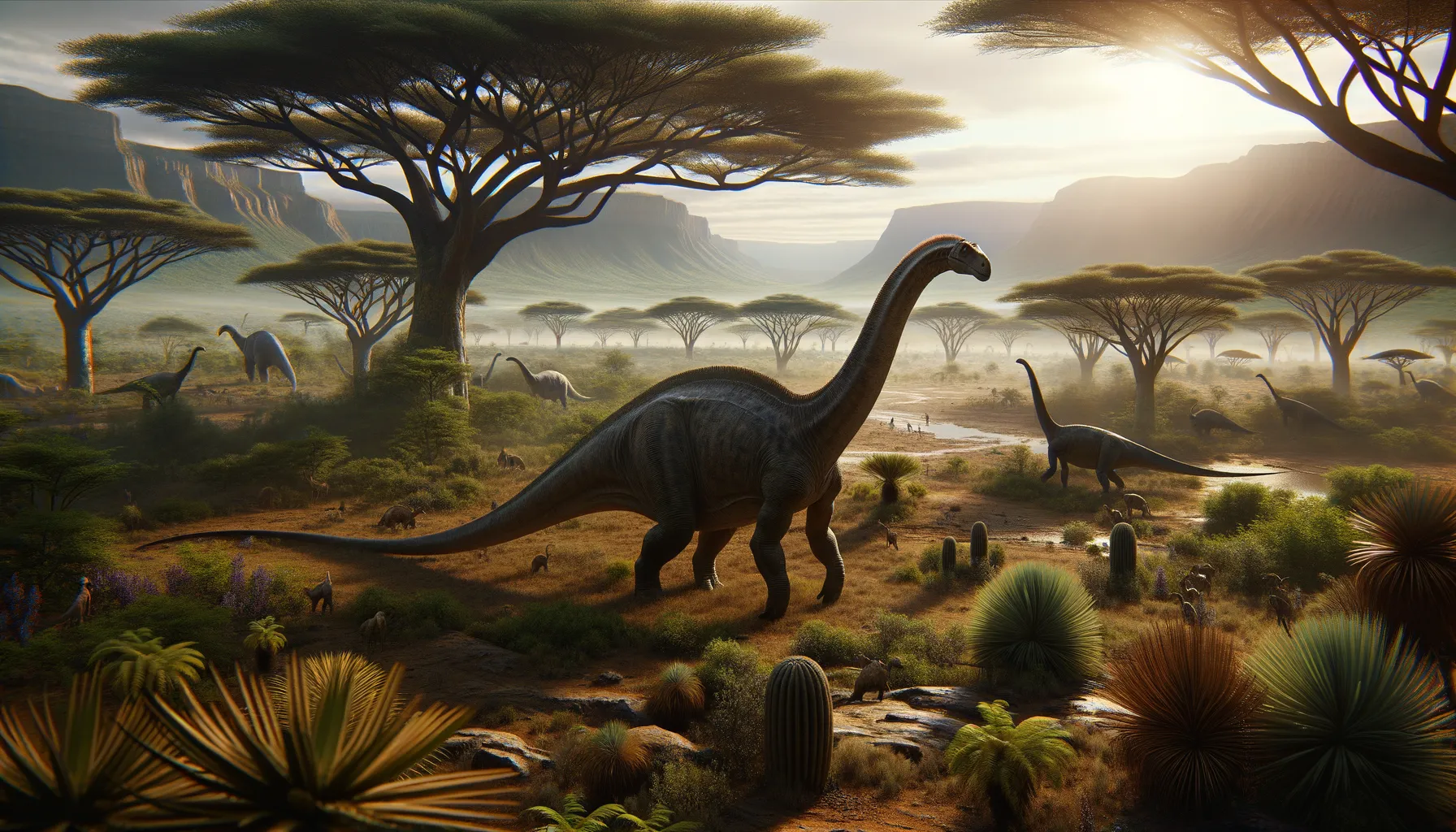
Arcusaurus
Ancient strides to a giant future.
Period
Jurassic
Length
Reached lengths of up to 4 meters (around 13 feet).
Height
Stood about 1 meter tall at the hip.
Weight
Approximately 50 kilograms (about 110 pounds).
Arcusaurus was a small, early sauropodomorph dinosaur that roamed what is now South Africa during the Early Jurassic period. This dinosaur is intriguing to paleontologists due to its position on the evolutionary path of larger sauropods, giving insights into the transition from smaller basal forms to gigantic long-necked giants that would dominate later in the Jurassic. Its remains provide critical information on dinosaur diversity during this era.
Diet
Arcusaurus was herbivorous, feeding primarily on plants. It likely browsed on low-lying vegetation, given its size and height.
Hunting
As a herbivore, Arcusaurus did not hunt other animals. Instead, it foraged in its environment for plants, possibly using its beak to strip leaves.
Environmental challenges
Arcusaurus faced challenges like food scarcity and competition from other herbivores. Climatic shifts could also have impacted its habitat, forcing it to adapt to changing resources. Predators, though not well-defined, would have posed a constant threat, necessitating vigilance and potential herd behavior for safety.
Speed
Relatively slow, moving less than 5 mph.
Lifespan
Estimated to live around 20 to 30 years.
First discovery
Discovered in 2011 in South Africa.
Fun Facts
- Arcusaurus lived during the Early Jurassic period, around 200 million years ago, making it one of the earliest members of its dinosaur group.
- This dinosaur was small compared to its later relatives, measuring around 3-4 meters in length.
- Arcusaurus was a herbivore, which means it primarily fed on plants, enjoying a leafy diet in prehistoric landscapes.
- The name 'Arcusaurus' comes from the Latin word 'arcus' meaning bow or arc, likely referring to the curved shape of its jaw.
- Fossils of Arcusaurus were first discovered in South Africa, giving scientists valuable insights into the distribution of early dinosaurs in that region.
- With only a few known specimens, Arcusaurus is considered rare, making each discovery a significant event for paleontologists.
- Arcusaurus had a long neck, which helped it reach high vegetation, similar to the feeding habits of modern-day giraffes.
Growth and Development
Arcusaurus likely grew steadily over its lifespan, reaching its full size within a few years. The development stages would include rapid growth spurts to reach maturity quickly. The growth rates would have varied with environmental conditions and resource availability.
Habitat
Arcusaurus inhabited regions with diverse plant life, including ferns, cycads, and early gymnosperms. These areas would be lush during its time, providing ample food for herbivores. It likely lived in herd settings for protection and social interaction.
Interaction with other species
Arcusaurus coexisted with various other early Jurassic vertebrates. Its interactions would include competition for food with other herbivores and vigilance against predatory dinosaurs. These dynamics played a significant role in its daily survival and evolutionary adaptations.
Natural lifespan
Arcusaurus had a natural lifespan ranging from 20 to 30 years.
Reproduction
Arcusaurus, like most dinosaurs, reproduced by laying eggs. Clutches may have been buried to protect them from predators and environmental effects. Parental care levels remain uncertain, but nesting behaviors likely included some form of safeguarding.
Social behaviour
Arcusaurus likely exhibited social behaviors, possibly moving in small herds. Social structures could involve shared vigilance and collective foraging, enhancing survival. Interactions amongst group members may have included simple cooperative behaviors.
Fossil locations
Arcusaurus fossils have been found primarily in South Africa. The initial discovery increased interest in Early Jurassic sites in the region. These locations have provided additional data concerning early sauropodomorph diversity and evolution.
